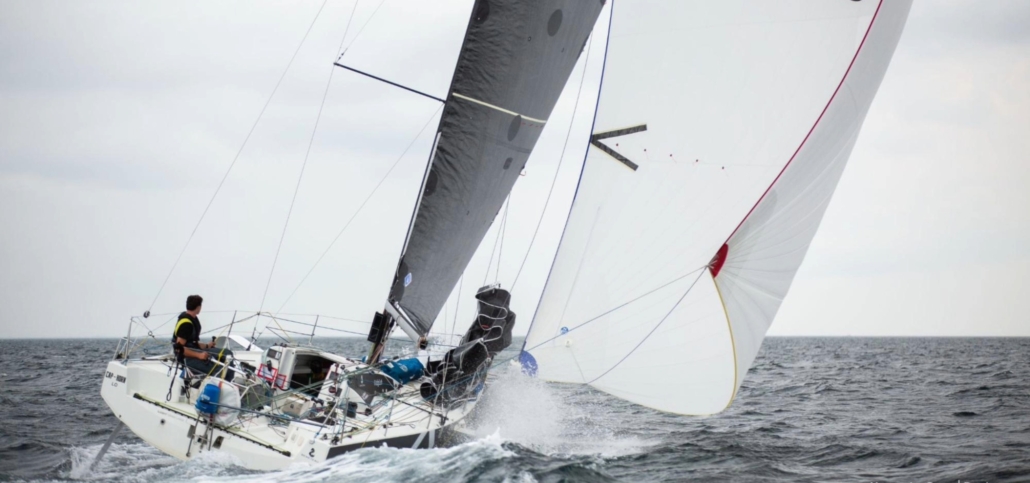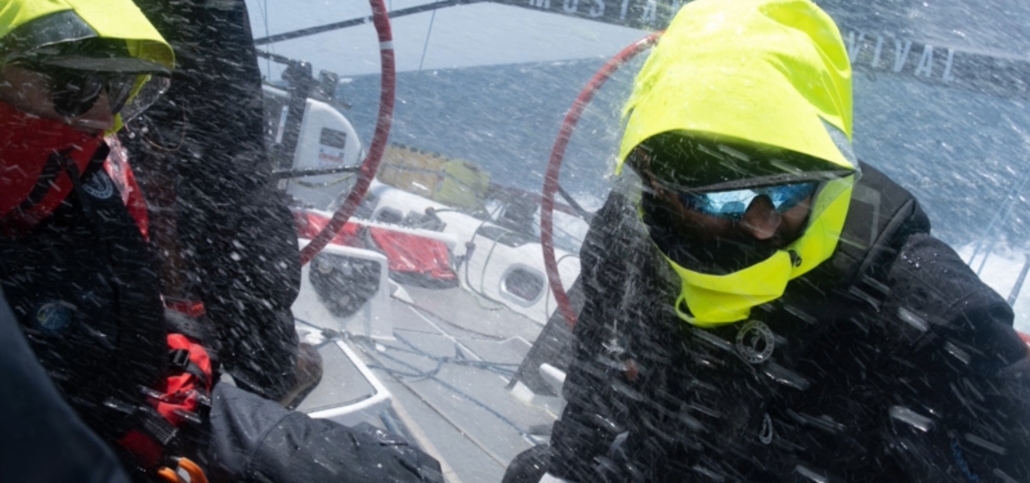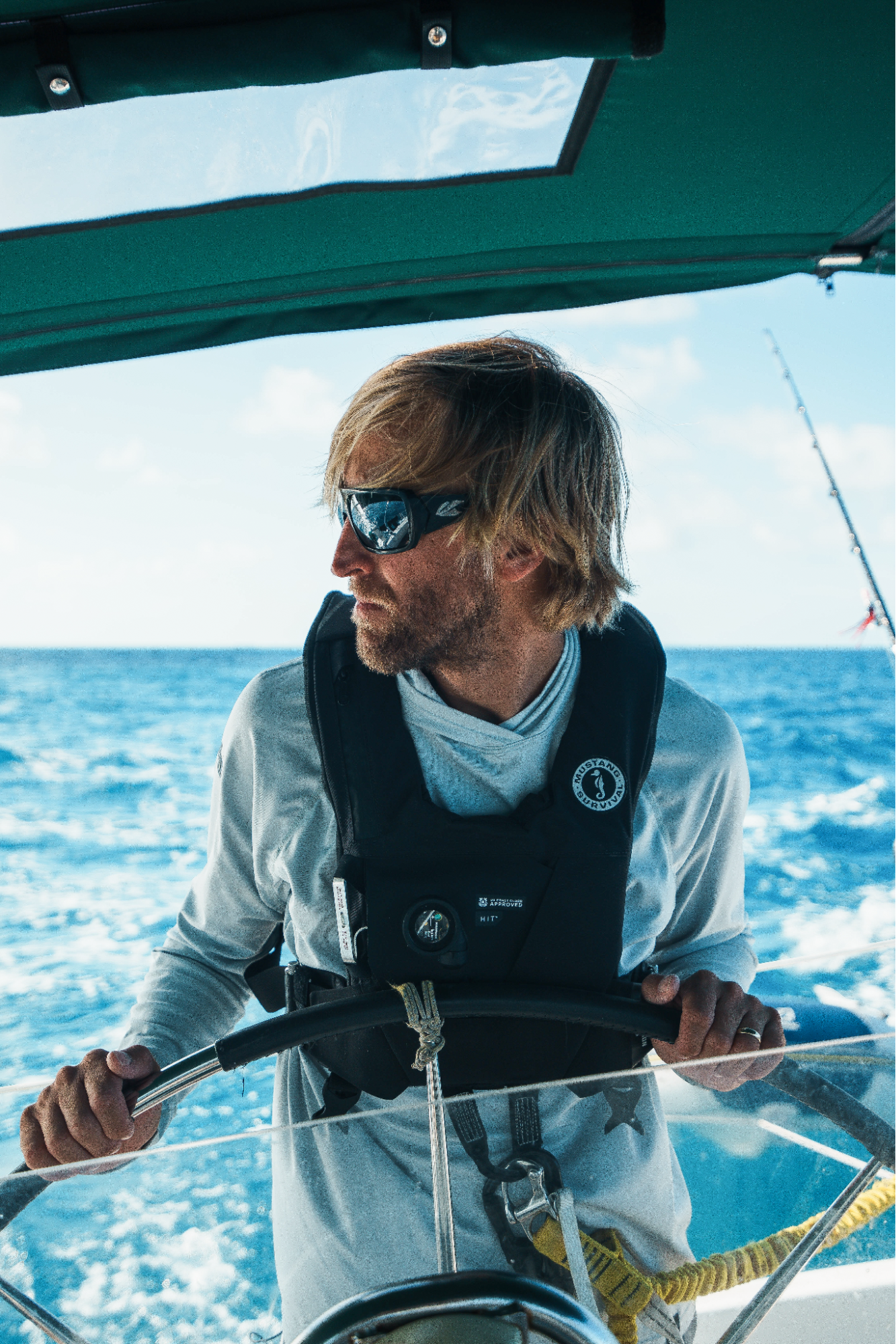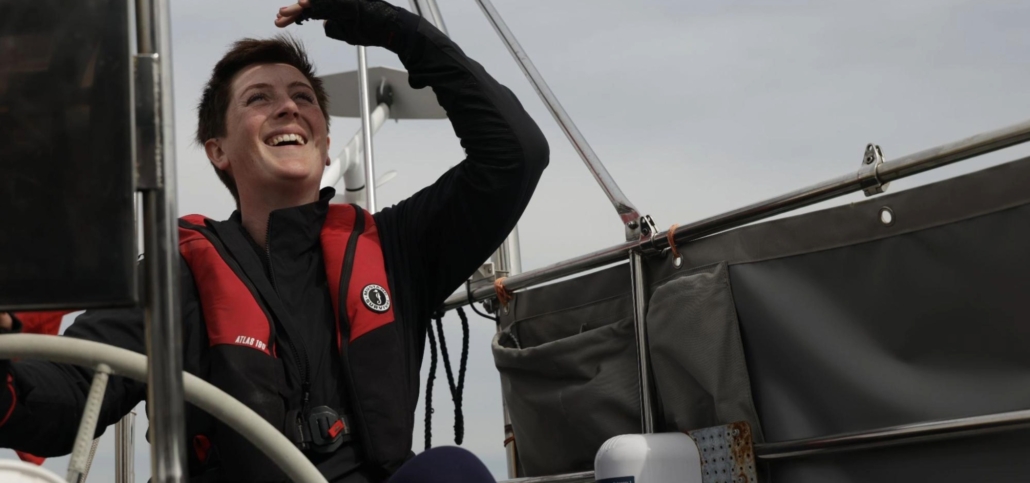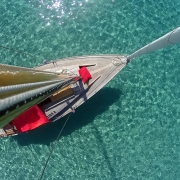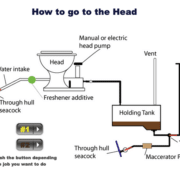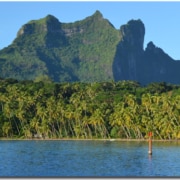Plan your dream yacht charter with NauticEd! Whether you prefer bareboat or captained, NauticEd is your trusted resource for unforgettable sailing vacations. We charge no fees—plus, our expert knowledge and extensive search capabilities often save you money. Start planning your next adventure today!
Layering Systems for Offshore Sailing
A Guide to Staying Comfortable in Harsh Conditions
Article shared by Mustang Survival, the leader in PFDs and marine safety products.
OFFSHORE CONDITIONS CAN SHIFT FAST
Biting wind, heavy spray and long days at sea demand more than a single layer of protection. The right layering system isn’t just about staying warm; it’s about managing moisture, maintaining mobility and staying focused on the task at hand.
From thermal base layers to waterproof shells, every piece plays a role. Whether you’re racing, cruising, or working offshore, this guide will help you build a reliable system that adapts to every condition – without compromising comfort or safety.
WHY LAYERING MATTERS
Layering is the cornerstone of effective temperature regulation during offshore sailing adventures. By strategically wearing multiple layers, you can maintain a stable body temperature and adapt to changing conditions on the water.
Each layer serves a specific function: the base layer manages moisture, the mid layer provides insulation and warmth, and the outer layer shields you from wind and water. This system allows you to control both heat production and heat loss, ensuring your body’s core remains at an optimal temperature throughout your journey.
For example, a mid-layer like Mustang Survival’s Men’s Torrens Thermal Crew Jacket offers essential insulation, trapping heat close to your body while still allowing for breathability and moisture management. By understanding the features and benefits of each layer, you can build a system that keeps you comfortable, confident, and ready for any adventure.
Baselayers: Body Temperature Regulation
Every successful offshore layering system begins with a solid foundation. A good baselayer doesn’t just keep you warm, it manages the microclimate between your skin and your gear. Offshore, where small mistakes compound over long watches, staying dry and comfortable isn’t a luxury – it’s a safeguard against fatigue and poor decision-making.
High-quality baselayers are intentionally thin and light, but they pull double duty: moving sweat away from the body while holding enough warmth to stabilize your core. This stability is what allows you to shift seamlessly from trimming sails in a squall to resting below deck without losing efficiency or comfort.
The philosophy is simple: start with comfort, end with safety. When your base is dialed, everything layered on top works more effectively – your insulation breathes, your shell performs and your body doesn’t waste energy fighting damp or cold.
Mid-Layers: Insulation & Heat Production
When the wind picks up or night falls, mid-layers keep your body heat where it belongs – close to your core. The best mid-layers are lightweight, breathable and designed to work with your base and outer layers. Modern insulation materials maximize efficiency by retaining warmth without adding unnecessary bulk.
The Torrens Hooded Thermal Jacket and Torrens Thermal Crew Jacket use Polartec® Alpha® insulation to stay warm even when wet, releasing energy as heat to help maintain your body temperature. With quick-drying lofted fibers and a durable water-repellent finish, they’re ideal for cold-weather sailing and versatile enough to wear alone on milder days.
Outer Layers: Protection from the Elements
Your outer layer is the frontline defense against the sea, the barrier that keeps driving rain, punishing wind and crashing spray where they belong: outside.
But it’s more than a shield… The right outer gear manages airflow, balances heat exchange and works with your body’s natural cooling systems so you can push hard without burning out. Offshore, conditions are rarely steady; one moment you’re grinding in a squall, the next you’re standing watch under calmer skies.
Prioritize breathable, waterproof fabrics that block spray while letting heat escape, and pay attention to details like hoods and cuffs that seal out leaks in high-movement areas. Think in systems: a heavier set, like the EP 6.5 collection for extreme conditions, and a lighter option, like the Meris for variable weather, gives you flexibility. The goal is simple – stay dry, regulate heat, and keep your energy focused on sailing, not fighting discomfort.
SAILING GLOVES: HAND PROTECTION
Offshore work can be tough on bare hands. Ropes, winches and wet lines take their toll quickly. The right pair should do three things: keep warmth in, protect against rope burn and maintain grip even when soaked.
Look for neoprene or reinforced palms for durability, and choose designs that match the conditions: full-fingered gloves for cold and heavy spray, or flexible open-finger gloves when finger dexterity is key. A well-chosen pair keeps your hands working as hard as you do, without distraction or fatigue.
UV CLOTHING: PROTECTION FROM THE SUN
Long days offshore mean relentless sun exposure, making UV protection as critical as staying dry or warm. A smart layering system doesn’t just prepare for cold and spray – it also shields against cumulative damage from hours of reflection off the water.
Fabrics such as the Adelphi UV Hooded Top with a high UPF rating are your first line of defense, creating a breathable barrier that blocks harmful rays while keeping you comfortable through long watches.
Protection should extend beyond your torso: your face, neck and hands are just as vulnerable, and neglecting them accelerates fatigue and risk. In short: treat sun protection as an essential layer, not an accessory – because endurance offshore depends on safeguarding both energy and skin.
LAYERING STRATEGIES FOR DIFFERENT CONDITIONS
Adapting your layering system to suit different conditions is essential for maintaining body temperature and ensuring comfort during offshore cruising or racing. On a cold day, start with a warm, breathable base layer to wick moisture away from your skin, add an insulating mid layer to trap heat and finish with a waterproof, windproof outer layer to prevent heat loss or hypothermia.
This combination helps you retain warmth and protect your body’s core from the elements. In milder or warmer conditions, opt for lighter, more breathable layers that allow excess heat to escape and prevent overheating. Additionally, consider the intensity of your activity – high-energy pursuits, like racing, may require a layering system that prioritizes moisture-wicking and ventilation to keep you cool and dry.
By developing a layering strategy tailored to your specific environment and activity, you can maintain effective temperature regulation, reduce the risk of heat loss or overheating, and stay focused on your adventure.
CHARTING YOUR COMFORT
Offshore sailing throws everything at you – sun, spray, wind and cold. The key to comfort and performance lies in a disciplined layering system: baselayers to manage moisture, mid-layers to retain warmth and waterproof outer shells to keep the elements out.
With Mustang Survival’s specialized offshore sailing gear, you can build a system that keeps you dry, warm and ready for whatever conditions the open ocean delivers.
Learn more about sail trim with either NauticEd’s FREE Basic Sail Trim Course for any aspiring sailor, or learn more comprehensive techniques with the Advanced Sail Trim online course.


